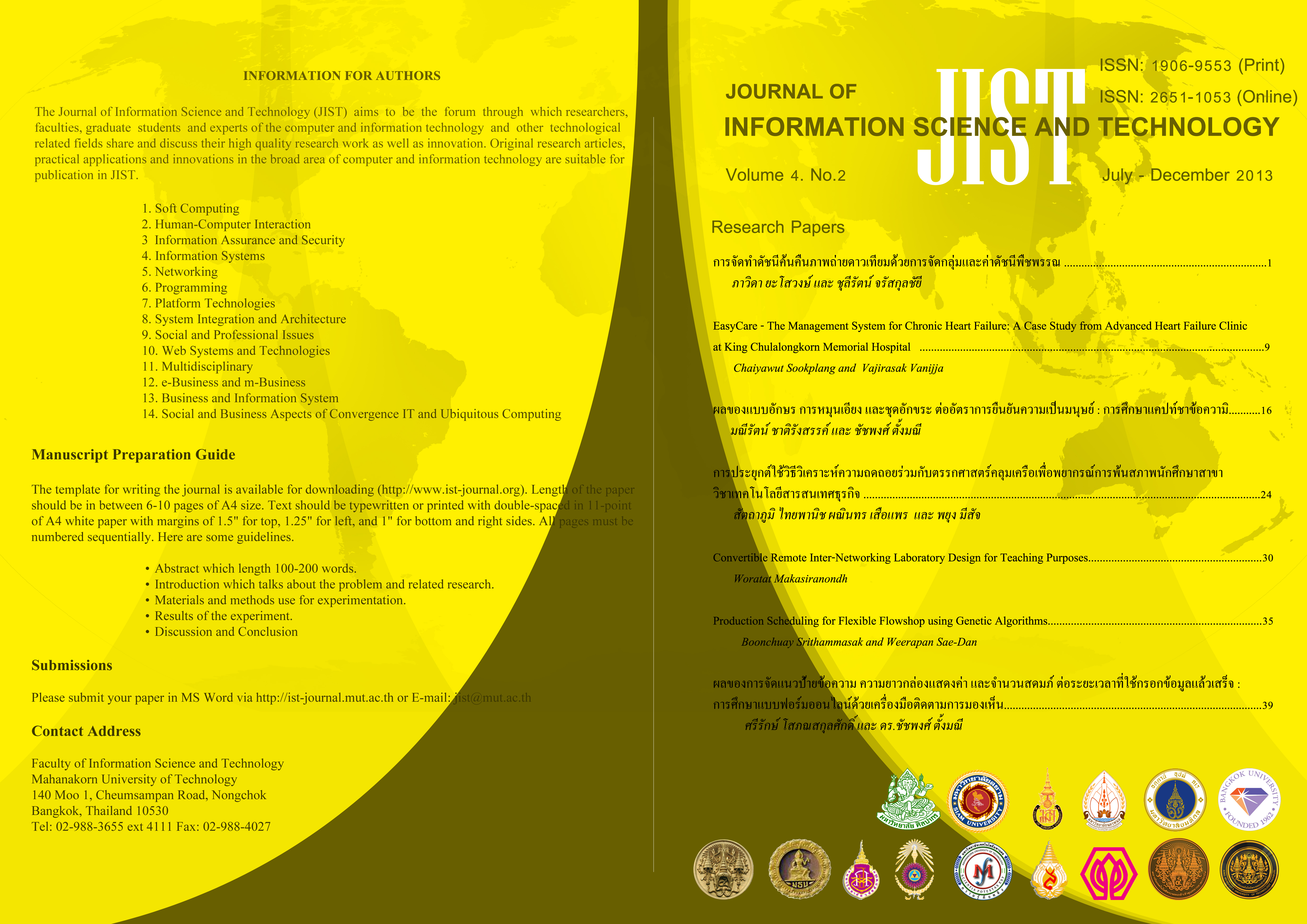Convertible Remote Inter-Networking Laboratory Design for Teaching Purposes
Main Article Content
Abstract
- On-line learning has proven to be a cost effective method of delivering courses to remote students. However in the field of network technology, practical ‘hands on’ experience is of paramount importance. Procedural knowledge gained during laboratory reinforces learning. Furthermore students must therefore be given the opportunity to configure network devices. Providing sufficient laboratory facilities to supplement a conventional face-to-face classroom is a challenge. Typically remote, on-line students are given access to network devices via the text-based Command Line Interface (CLI). The CLI alone is verbose and many different instructions are needed to understand device operation and the output can also be extensive and complex. Particularly, remote student interaction with the equipment is limited compared with a traditional laboratory model. This paper reviews existing remote access laboratory designs, and explains the new convertible design in details, which address the requirement of remote students.
Article Details
This work is licensed under a Creative Commons Attribution-NonCommercial-NoDerivatives 4.0 International License.
I/we certify that I/we have participated sufficiently in the intellectual content, conception and design of this work or the analysis and interpretation of the data (when applicable), as well as the writing of the manuscript, to take public responsibility for it and have agreed to have my/our name listed as a contributor. I/we believe the manuscript represents valid work. Neither this manuscript nor one with substantially similar content under my/our authorship has been published or is being considered for publication elsewhere, except as described in the covering letter. I/we certify that all the data collected during the study is presented in this manuscript and no data from the study has been or will be published separately. I/we attest that, if requested by the editors, I/we will provide the data/information or will cooperate fully in obtaining and providing the data/information on which the manuscript is based, for examination by the editors or their assignees. Financial interests, direct or indirect, that exist or may be perceived to exist for individual contributors in connection with the content of this paper have been disclosed in the cover letter. Sources of outside support of the project are named in the cover letter.
I/We hereby transfer(s), assign(s), or otherwise convey(s) all copyright ownership, including any and all rights incidental thereto, exclusively to the Journal, in the event that such work is published by the Journal. The Journal shall own the work, including 1) copyright; 2) the right to grant permission to republish the article in whole or in part, with or without fee; 3) the right to produce preprints or reprints and translate into languages other than English for sale or free distribution; and 4) the right to republish the work in a collection of articles in any other mechanical or electronic format.
We give the rights to the corresponding author to make necessary changes as per the request of the journal, do the rest of the correspondence on our behalf and he/she will act as the guarantor for the manuscript on our behalf.
All persons who have made substantial contributions to the work reported in the manuscript, but who are not contributors, are named in the Acknowledgment and have given me/us their written permission to be named. If I/we do not include an Acknowledgment that means I/we have not received substantial contributions from non-contributors and no contributor has been omitted.
References
2. X. Cao, et al., "Developing a multifunctional network laboratory for teaching and research", Proceedings of the 10th ACM conference on SIG-information technology education, ACM, Fairfax, Virginia, USA, 2009.
3. S.C. Sivakumar and W. Robertson, "Developing an integrated Web engine for online Internetworking education: a case study", Internet Research, 14, 2, 175-192, 2004.
4. O. Tomov, "Virtual labs with remote access to a real hardware equipment in the computer systems education", Proceedings of the 9th International Conference on Computer Systems and Technologies and Workshop for PhD Students in Computing, ACM, Gabrovo, Bulgaria, 2008.
5. I. Murray and H. Armstrong. "Remote Laboratory Access for Students with Vision Impairment", Networking and Services, 2009. ICNS '09. Fifth International Conference on, 566-571, 2009.
6. R.T. Abler, et al., "Georgia tech information security center hands-on network security laboratory", Education, IEEE Transactions on, 49, 1, 82-87, 2006.
7. S. Abbott-McCune, et al., "Developing a reconfigurable network lab", Proceedings of the 9th ACM SIGITE conference on Information technology education, ACM, Cincinnati, OH, USA. p. 255-258, 2008.
8. S. Rigby and M. Dark, "Designing a flexible, multipurpose remote lab for the IT curriculum", Proceedings of the 7th conference on Information technology education, ACM, Minneapolis, Minnesota, USA, 2006.
9. W. Makasiranondh, S.P. Maj, and D. Veal. "Remote teaching environment for internetworking students in Thailand", 1st WIETE annual conference on Engineering and Technology Education, Pattaya, Thailand, 68-73, 2010.



